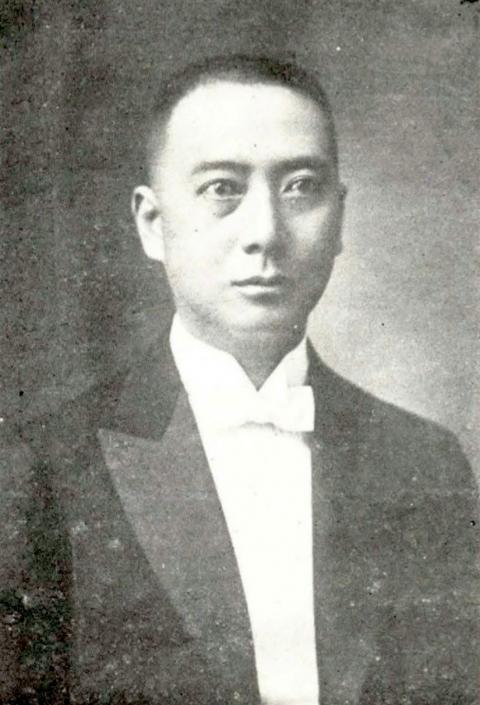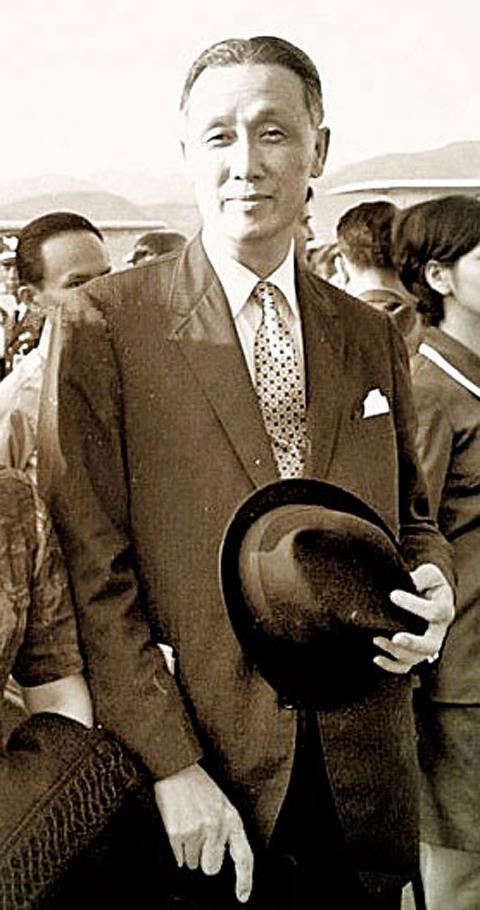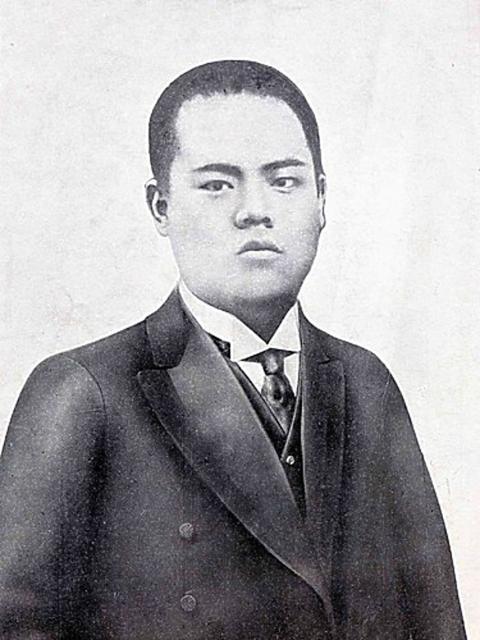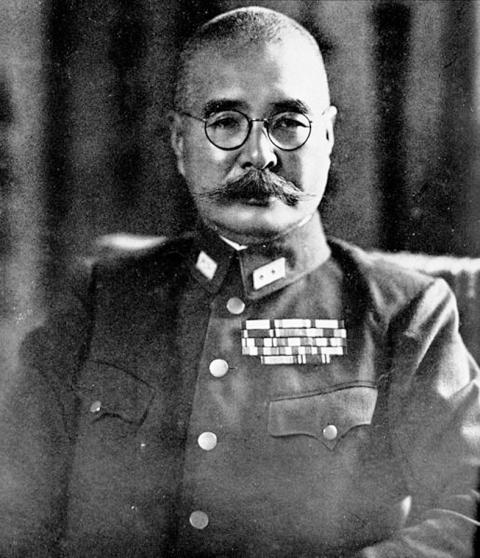July 23 to July 29
Koo Chen-fu (辜振甫) only discussed the incident once in public. It was May 1993, and firebrand Democratic Progressive Party (DPP) legislator Chen Shui-bian (陳水扁) had been criticizing him publicly for months in a bid to try and stop the then-Straits Exchange Foundation (SEF, 海峽交流基金會) chairman from meeting his Chinese counterpart Wang Daohan (汪道涵) in Singapore.
After the conclusion of what would later be known as the historic Koo-Wang Talks, Chen continued to question Koo, finally bringing up the subject Koo had preferred to avoid: his sentencing in 1947 for his involvement in the “Plotting Taiwan Independence Incident” (謀議台灣獨立案), where he was accused of working with Japanese officers to create an independent Taiwan after Japanese surrender and before the arrival of the Chinese Nationalist Party (KMT).

Photo courtesy of Wikimedia Commons
Chen’s camp had been trying to paint Koo, a long-time KMT member, as a traitor to the country, even calling out his late father, Koo Hsien-jung (辜顯榮), who invited Japanese troops into Taipei in 1895 after local resistance had crumbled and the city had descended into chaos. Some say he was being opportunistic, others say he did it to restore order and prevent further violence. Regardless, the family worked closely with the authorities and prospered under colonial rule.
Chen’s questioning about the 1946 incident finally rattled the usually stoic Koo.
“What’s so dishonorable about serving a groundless sentence? Is that betraying the country? It’s already unfair that the government never cleared my name. Today I have to suffer this treatment in the legislature. This is completely unjust!” he shouted.

Photo courtesy of Wikimedia Commons
POST-WAR SENTIMENT
After Japan’s surrender on Aug. 15, 1945, the colonial Office of the Taiwan Governor-General reported that while most Taiwanese would likely accept Chinese rule, there were some who would worry about being treated as Japanese collaborators. Others were concerned about the KMT’s ability to rule properly. In response, the office instructed the police to focus on maintaining order, collecting information and to “decisively suppress all signs of scheming for Taiwanese independence.”
These feelings were not unusual. For example, Hsinchu assemblyman Huang Wei-sheng (黃維生) believed that he would have a better chance of surviving and preserving his property under an independent Taiwan approved by Japan, and made a petition to the local government. Yang Kui (楊逵), a novelist and anti-Japanese activist, also expressed his distaste for the KMT’s “reckless and brutal ways” in China, but the colonial reports note that “he was not of much influence.”

Photo courtesy of Wikimedia Commons
Rikichi Ando, Japan’s final governor-general in Taiwan, reportedly told the independence petitioners that “I understand your sentiments for Taiwan independence. But looking at the bigger picture, for your sake, I suggest that you cease such activities. If you insist on proceeding, I will have no choice but to request the Japanese Army to suppress your movement.”
The sentiment faded quickly, however, as by September, colonial reports show that most of the population were preparing to welcome the arrival of the KMT. The Minpao (民報) newspaper ran an editorial in October of that year comparing independence activists to Qin Kuai (秦檜), a notorious figure in the Song Dynasty who is regarded as a traitor.
GUILTY OR NOT?

Photo courtesy of Wikimedia Commons
The KMT arrested Koo and four other alleged independence petitioners in February 1946. On July 29, 1947, they were convicted of sedition. Koo received the longest sentence of over two years.
“Most people are overjoyed about the return of Taiwan to the motherland,” the verdict states. “But Koo Chen-fu and his accomplices leaned toward Japan, and were one of the few who lamented Japan’s loss.”
The verdict states that several Japanese officers who refused to accept surrender instigated the incident and recruited Taiwanese to join in their plan, which was only stopped after Ando made his warning.

Photo courtesy of Wikimedia Commons
“The so-called self-rule movement was started by the Japanese and would benefit the Japanese,” it continued. “This is essentially sedition under the guise of self-rule. We have sacrificed so much to fight the Japanese and liberate the people of Taiwan, yet these people are not only not grateful, but succumbed to Japanese influence.”
The reason for the relatively short sentences are revealed by the following: “Considering the fact that the Japanese are the instigators and the defendants have been brainwashed by the Japanese, their actions are somewhat forgivable.”
However, later interviews with former Japanese military officials in Taiwan show them insisting that they had nothing to do with the independence attempt.
Koo has long maintained his innocence, claiming that he actually tried to stop the attempt and the sentencing was punishment for the Koo family’s close ties to the colonial government. The son of Hsu Ping (徐丙), another defendant, also declared his father’s innocence. His version of events state that Hsu’s close associate Lin Hsiung-hsiang (林熊祥) angered then-governor general Chen Yi (陳儀) by demanding that he repay an overdue loan, and Chen arrested him and his friends as revenge.
Due to the lack of evidence, the truth is still unclear. However, Japanese records clearly state that Lin Maosei (林茂生) and other “Taiwanese elite” did make an attempt at independence right after Japanese surrender. Lin “disappeared” in the aftermath of the 228 Incident, leaving nothing behind that proves whether Koo and the other defendants were involved.
An interesting footnote to the story: While Koo Chen-fu became a KMT loyalist despite his alleged independence attempt, his half-brother Koo Kwang-ming (辜寬敏) is a DPP member and lifelong Taiwan independence activist.
Taiwan in Time, a column about Taiwan’s history that is published every Sunday, spotlights important or interesting events around the nation that have anniversaries this week.

This month the government ordered a one-year block of Xiaohongshu (小紅書) or Rednote, a Chinese social media platform with more than 3 million users in Taiwan. The government pointed to widespread fraud activity on the platform, along with cybersecurity failures. Officials said that they had reached out to the company and asked it to change. However, they received no response. The pro-China parties, the Chinese Nationalist Party (KMT) and Taiwan People’s Party (TPP), immediately swung into action, denouncing the ban as an attack on free speech. This “free speech” claim was then echoed by the People’s Republic of China (PRC),

Exceptions to the rule are sometimes revealing. For a brief few years, there was an emerging ideological split between the Democratic Progressive Party (DPP) and Chinese Nationalist Party (KMT) that appeared to be pushing the DPP in a direction that would be considered more liberal, and the KMT more conservative. In the previous column, “The KMT-DPP’s bureaucrat-led developmental state” (Dec. 11, page 12), we examined how Taiwan’s democratic system developed, and how both the two main parties largely accepted a similar consensus on how Taiwan should be run domestically and did not split along the left-right lines more familiar in

Many people in Taiwan first learned about universal basic income (UBI) — the idea that the government should provide regular, no-strings-attached payments to each citizen — in 2019. While seeking the Democratic nomination for the 2020 US presidential election, Andrew Yang, a politician of Taiwanese descent, said that, if elected, he’d institute a UBI of US$1,000 per month to “get the economic boot off of people’s throats, allowing them to lift their heads up, breathe, and get excited for the future.” His campaign petered out, but the concept of UBI hasn’t gone away. Throughout the industrialized world, there are fears that

Most heroes are remembered for the battles they fought. Taiwan’s Black Bat Squadron is remembered for flying into Chinese airspace 838 times between 1953 and 1967, and for the 148 men whose sacrifice bought the intelligence that kept Taiwan secure. Two-thirds of the squadron died carrying out missions most people wouldn’t learn about for another 40 years. The squadron lost 15 aircraft and 148 crew members over those 14 years, making it the deadliest unit in Taiwan’s military history by casualty rate. They flew at night, often at low altitudes, straight into some of the most heavily defended airspace in Asia.